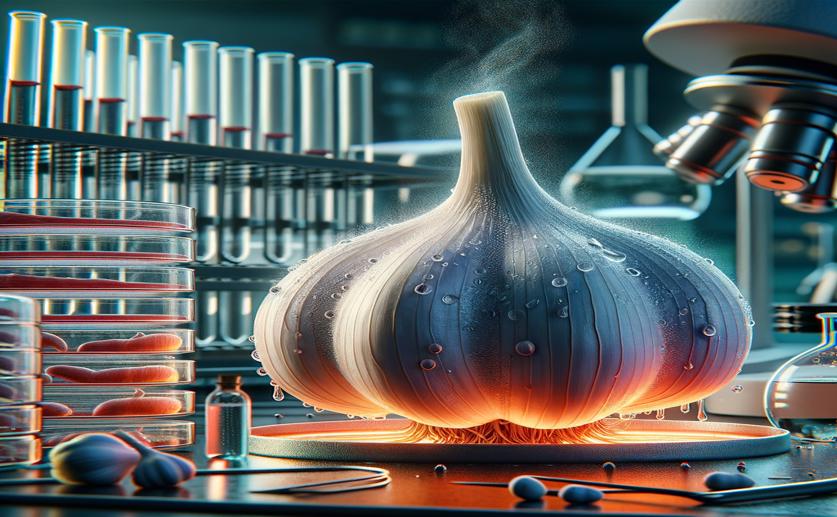
Understanding Heat Stress Response in Garlic: A Study on Key Genes
Jenn Hoskins
18th May, 2024

Image Source: Natural Science News, 2024
Key Findings
- Researchers at Jining Medical University identified 17 heat shock transcription factors (HSFs) in garlic, classified into three subfamilies
- The study found that these genes have remained stable through domestication, with minimal reduction in genetic diversity
- Key gene Asa6G04911 was shown to interact with heat stress proteins, highlighting its role in managing heat stress in garlic
References
Main Study
1) Genome-wide identification, classification and expression analysis of the heat shock transcription factor family in Garlic (Allium sativum L.).
Published 18th May, 2024
Journal: BMC plant biology
Issue: Vol 24, Issue 1, May 2024
Related Studies
2) Genome-Wide Dissection of the Heat Shock Transcription Factor Family Genes in Arachis.
3) Arabidopsis and the heat stress transcription factor world: how many heat stress transcription factors do we need?
Journal: Cell stress & chaperones, Issue: Vol 6, Issue 3, Jul 2001
4) Transcriptional Regulatory Network of Plant Heat Stress Response.



 17th May, 2024 | Jenn Hoskins
17th May, 2024 | Jenn Hoskins